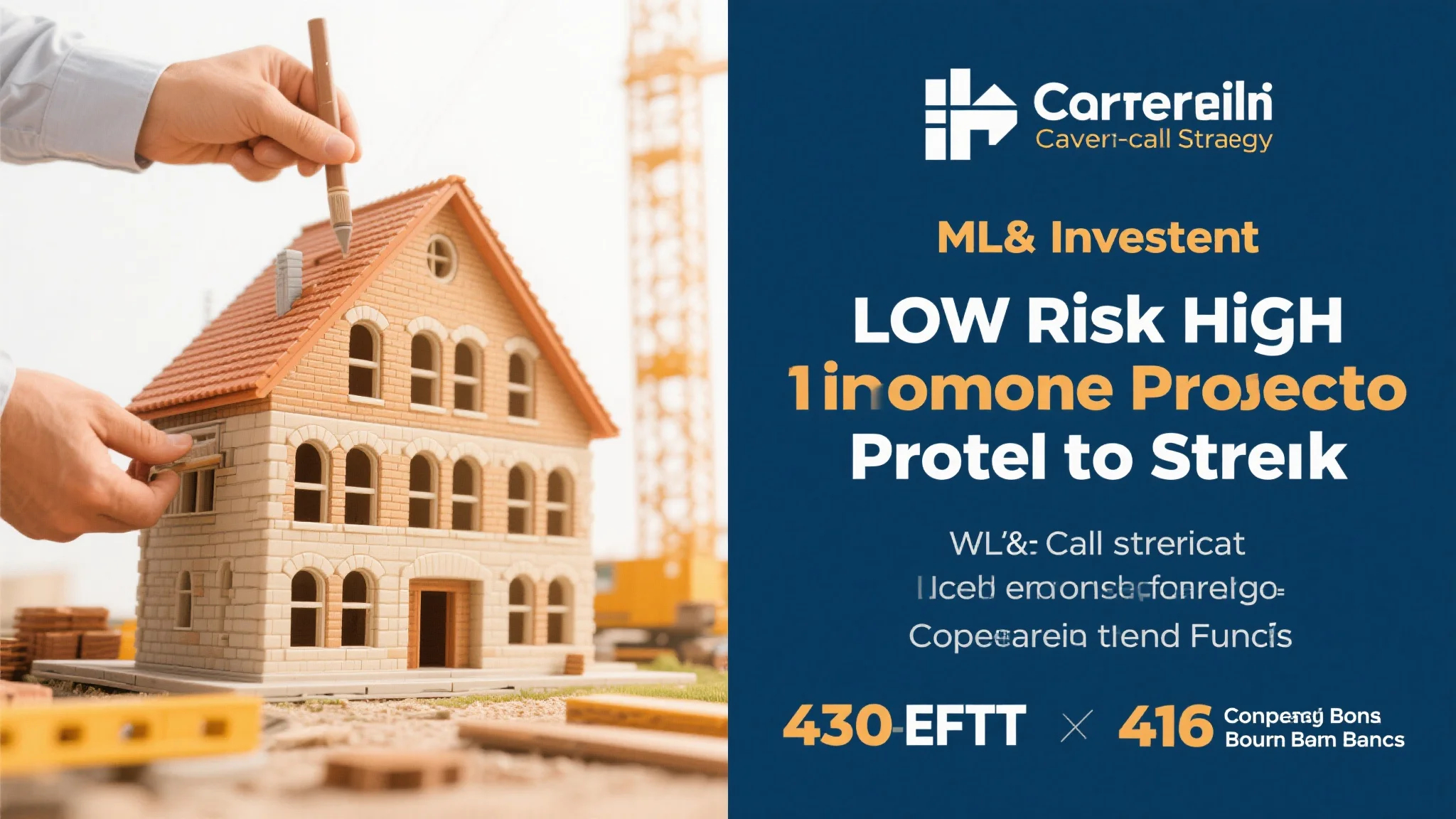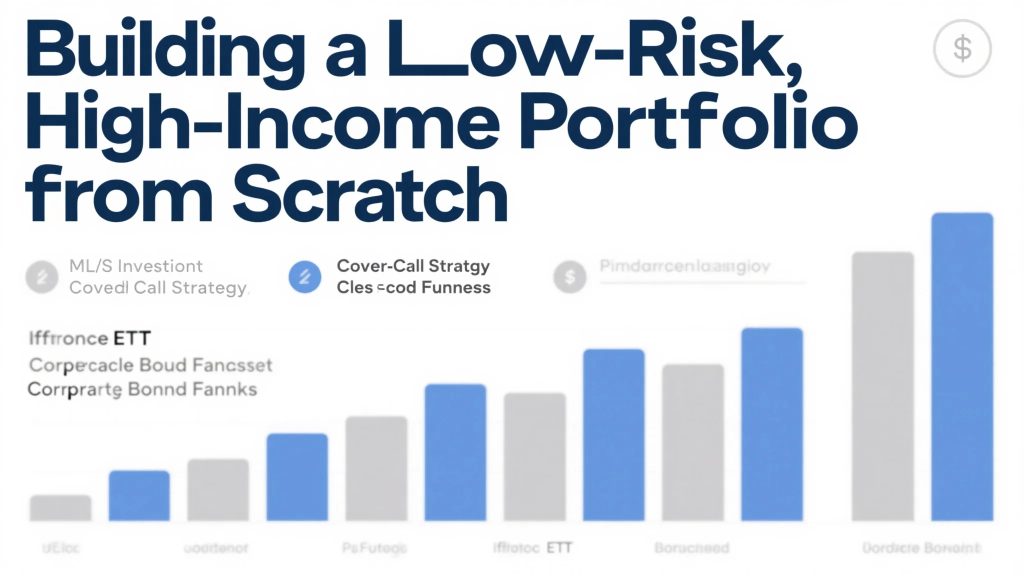
Building a Low-Risk, High-Income Portfolio from Scratch
The Foundation of Income Investing: Understanding Your Risk Tolerance
Building a low-risk, high-income portfolio requires more than just picking investments with attractive yields – it demands a thorough understanding of your personal risk parameters. Many investors make the mistake of chasing returns without properly assessing how much volatility they can truly stomach, often leading to panic selling at the worst possible moments. The sweet spot for income investors lies in identifying securities that provide consistent cash flow while protecting capital during market downturns. This balanced approach becomes particularly crucial for retirees or those depending on their portfolios to cover living expenses.
One often overlooked aspect of risk assessment involves analyzing the sustainability of income streams. A security might offer an enticing 8% yield, but if that payout comes from return of capital rather than genuine earnings, you’re essentially getting your own money back while eroding your principal. The most successful income investors develop a keen eye for distinguishing between sustainable distributions and yield traps. This skill becomes particularly valuable when evaluating master limited partnerships, covered call strategies, and other complex income vehicles that don’t always disclose their payout sources transparently.
Market history provides valuable lessons about how different income investments perform during various economic conditions. The 2008 financial crisis, for instance, revealed how certain supposedly safe income investments carried hidden risks, while others proved remarkably resilient. Studying these historical patterns helps investors construct portfolios that can weather different market environments without requiring constant tactical adjustments. The goal isn’t to predict the future but to build a collection of income generators that collectively provide stability across cycles.
Master Limited Partnerships: Energy Sector Income Powerhouses
For investors seeking substantial cash flow from America’s energy infrastructure, MLPs investment opportunities offer unique advantages. These specialized entities, which primarily operate pipelines and storage facilities, combine the tax benefits of partnerships with the liquidity of publicly traded securities. What makes MLPs particularly attractive for income portfolios is their requirement to distribute nearly all available cash to unitholders, often resulting in yields significantly higher than traditional energy stocks or bonds. The stable, fee-based nature of their midstream operations provides relatively predictable cash flows regardless of commodity price fluctuations.
Tax considerations play an outsized role in MLP investing success. Unlike dividends from corporations, MLP distributions typically contain significant return of capital components that reduce your cost basis rather than creating immediate taxable income. This tax deferral can last for years, sometimes until you sell your units, making MLPs particularly attractive for taxable accounts. However, the annual K-1 tax forms add complexity that deters some investors, especially those who prefer the simplicity of 1099-DIV reporting. Understanding these tradeoffs helps determine whether MLPs belong in your portfolio and which account types hold them most efficiently.
Recent regulatory changes have improved the MLP landscape for smaller investors. Previously, the sector catered primarily to institutional players and high-net-worth individuals, but newer products have democratized access while mitigating some traditional MLP drawbacks. Exchange-traded products that hold MLPs, for instance, provide simplified tax reporting while maintaining exposure to the sector’s income potential. These innovations make it easier than ever to incorporate energy infrastructure cash flows into diversified income portfolios without taking on excessive single-security risk.
Generating Premium Income With Covered Call Strategies
The covered call strategy has evolved from an options trading technique into a mainstream income generation tool for conservative investors. At its core, this approach involves selling call options against stocks you already own, collecting premium income in exchange for potentially capping your upside. When implemented on stable, dividend-paying stocks, covered calls can enhance yield by several percentage points annually while providing modest downside protection. The strategy works particularly well in sideways or moderately bullish markets where the extra income compensates for limited capital appreciation.
One underappreciated aspect of covered call writing involves stock selection. While the strategy can theoretically work on any stock with options activity, the best candidates typically exhibit low volatility, strong balance sheets, and reasonable valuations. These characteristics reduce the likelihood of severe price declines while still offering attractive option premiums. Many investors focus on blue-chip dividend payers from sectors like utilities, consumer staples, and healthcare – industries less prone to dramatic swings than technology or biotech stocks. The sweet spot often lies in stocks with option implied volatilities high enough to generate meaningful income but not so high as to signal underlying instability.
Tax efficiency represents another consideration for covered call practitioners. Option premiums receive different tax treatment depending on whether the options expire worthless, get exercised, or are closed early. Short-term capital gains rates typically apply to premiums from options held less than a year, while qualified dividend rates may apply to the underlying stock’s payouts. This creates potential tax optimization opportunities by carefully managing holding periods and exercise scenarios. Some investors deliberately set strike prices where they’d be comfortable selling shares anyway, turning potential capital gains into a win-win scenario regardless of market direction.

Closed-End Funds: The Income Investor’s Secret Weapon
Sophisticated income seekers have long utilized closed-end funds to access specialized strategies and enhanced yields unavailable through traditional mutual funds or ETFs. These unique investment vehicles raise capital through an initial public offering and then trade on exchanges like stocks, often at prices diverging from their net asset values. The closed-end structure allows portfolio managers to employ income-enhancing techniques without worrying about daily cash flows from investors, frequently resulting in higher distribution rates than comparable open-end funds.
Discounts to net asset value represent one of the most compelling features of closed-end fund investing. Unlike traditional mutual funds that always transact at NAV, CEFs routinely trade at premiums or discounts based on market sentiment and demand. Savvy investors can purchase high-quality funds at substantial discounts, effectively acquiring dollar bills for eighty or ninety cents. These discounts sometimes narrow over time, providing potential capital gains in addition to the funds’ generous income streams. The most disciplined investors establish target discount thresholds and patiently wait for opportunities to buy at advantageous levels.
Distribution policies vary widely among closed-end funds, requiring careful analysis before investing. Some funds maintain stable monthly or quarterly payouts by returning capital when investment income proves insufficient, while others adjust distributions according to actual earnings. Understanding a fund’s distribution policy helps set realistic expectations about yield sustainability. Many successful CEF investors focus on funds with long histories of maintaining or increasing payouts through multiple market cycles, avoiding those with erratic distribution patterns that might signal underlying portfolio issues.
Fixed Income ETFs: Modernizing Bond Portfolio Construction
The rise of fixed income ETF products has transformed how individual investors access bond markets, offering transparency and liquidity that traditional bond funds can’t match. These exchange-traded vehicles provide instant diversification across hundreds or thousands of bonds with single transactions, eliminating the need to build laddered portfolios bond-by-bond. For income-focused investors, fixed income ETFs solve several historical challenges with bond investing, including price discovery difficulties and cumbersome settlement processes that made retail bond trading inefficient.
Yield curve positioning takes on particular importance when selecting fixed income ETFs. Short-duration funds typically offer lower yields but less interest rate risk, making them suitable for investors expecting rising rates or needing capital preservation. Intermediate-term ETFs often provide the best balance between yield and risk, while long-duration options offer higher income but greater sensitivity to rate changes. In today’s environment, many investors construct barbell strategies combining short and long duration ETFs to capture yield while maintaining flexibility to adapt to changing monetary policies.
Credit quality considerations remain paramount in fixed income ETF selection. Investment-grade corporate ETFs provide higher yields than government bond funds but carry additional default risk. High-yield bond ETFs offer even greater income potential but require stronger stomachs for volatility. The most conservative investors often blend Treasury ETFs with carefully selected corporate offerings to optimize risk-adjusted returns. Newer ETF structures now even allow investors to target specific credit ratings or sectors, enabling precise portfolio tailoring that was previously only available to institutional bond managers.
Corporate Bond Funds: Balancing Yield and Credit Risk
For investors willing to accept modest credit risk in pursuit of higher income, corporate bond funds offer a compelling middle ground between government securities and equities. These pooled investment vehicles provide access to diversified portfolios of business debt obligations, spreading default risk across multiple issuers and industries. In the current environment, corporate bonds often yield several percentage points more than comparable-maturity Treasuries, compensating investors for the additional risk of potential business downturns or credit rating downgrades.
Active versus passive management represents a key decision point for corporate bond fund investors. Unlike stock markets where passive strategies frequently outperform, corporate bond markets may offer more opportunities for skilled active managers to add value through credit analysis and sector rotation. The dispersion of returns among individual corporate bonds creates potential for managers to avoid problem credits while capitalizing on mispriced opportunities. However, active management comes with higher fees that can erode yield advantages, making cost-conscious selection particularly important.
Duration management plays a critical role in corporate bond fund performance, especially during periods of interest rate volatility. Funds focusing on shorter-duration bonds typically experience less price fluctuation when rates change but offer lower yields. Longer-duration options provide higher income but greater sensitivity to rate movements. Many successful investors maintain core positions in intermediate-term corporate bond funds while tactically adjusting duration exposure based on their interest rate outlook and income needs.
Constructing Your Balanced Income Portfolio
The art of portfolio construction lies in combining these diverse income sources into a cohesive whole that meets your cash flow requirements while managing risk. A well-designed income portfolio might allocate to MLPs for energy exposure, covered call strategies for equity participation, closed-end funds for enhanced yield opportunities, and a mix of fixed income ETFs and corporate bond funds for stability. The exact proportions depend on individual circumstances, but the principle of diversification across income sources remains constant among successful income investors.
Rebalancing discipline helps maintain target risk levels as market conditions change. Unlike growth portfolios that might rebalance annually, income portfolios often benefit from more frequent adjustments to capture opportunities in mispriced sectors or to take profits from strong performers. Many investors establish threshold-based rebalancing rules – for instance, resetting allocations whenever any holding deviates more than 5% from its target weight. This systematic approach removes emotion from decision-making while ensuring the portfolio doesn’t become overly concentrated in any single income source.
Tax location strategies can significantly enhance after-tax returns for income portfolios. Generally, investments generating ordinary income (like corporate bonds or REITs) belong in tax-advantaged accounts, while those producing qualified dividends or long-term capital gains can reside in taxable accounts. MLPs present special considerations due to their unique tax treatment, often making taxable accounts preferable despite their high yields. Thoughtful allocation across account types can potentially add 0.5% or more to annual after-tax returns – a meaningful difference over long investment horizons.
Monitoring and Adjusting Your Income Strategy
Building a low-risk, high-income portfolio represents just the beginning – ongoing monitoring ensures the strategy continues meeting your needs as markets and personal circumstances evolve. Regular review of distribution coverage ratios, credit quality trends, and sector exposures helps identify potential problems before they impact cash flows. Many successful investors maintain watch lists of potential replacements for underperforming holdings, allowing quick action when opportunities arise without compromising due diligence standards.
Yield-on-cost tracking provides valuable perspective on portfolio performance over time. As dividends and distributions grow from quality income investments, your effective yield on original capital often rises substantially – sometimes reaching double digits on positions held for many years. This metric helps long-term investors appreciate the compounding power of rising income streams, reinforcing discipline during market downturns when capital values fluctuate but cash flows remain stable.
Lifecycle considerations should guide gradual portfolio adjustments as investors approach and enter retirement. The transition from accumulation to distribution phases often warrants shifting toward more stable income sources with lower volatility, even if it means sacrificing some yield potential. Many investors implement a “tiered” income approach where near-term cash needs get covered by the most reliable sources, while longer-term allocations can tolerate more variability in pursuit of higher returns and inflation protection.


